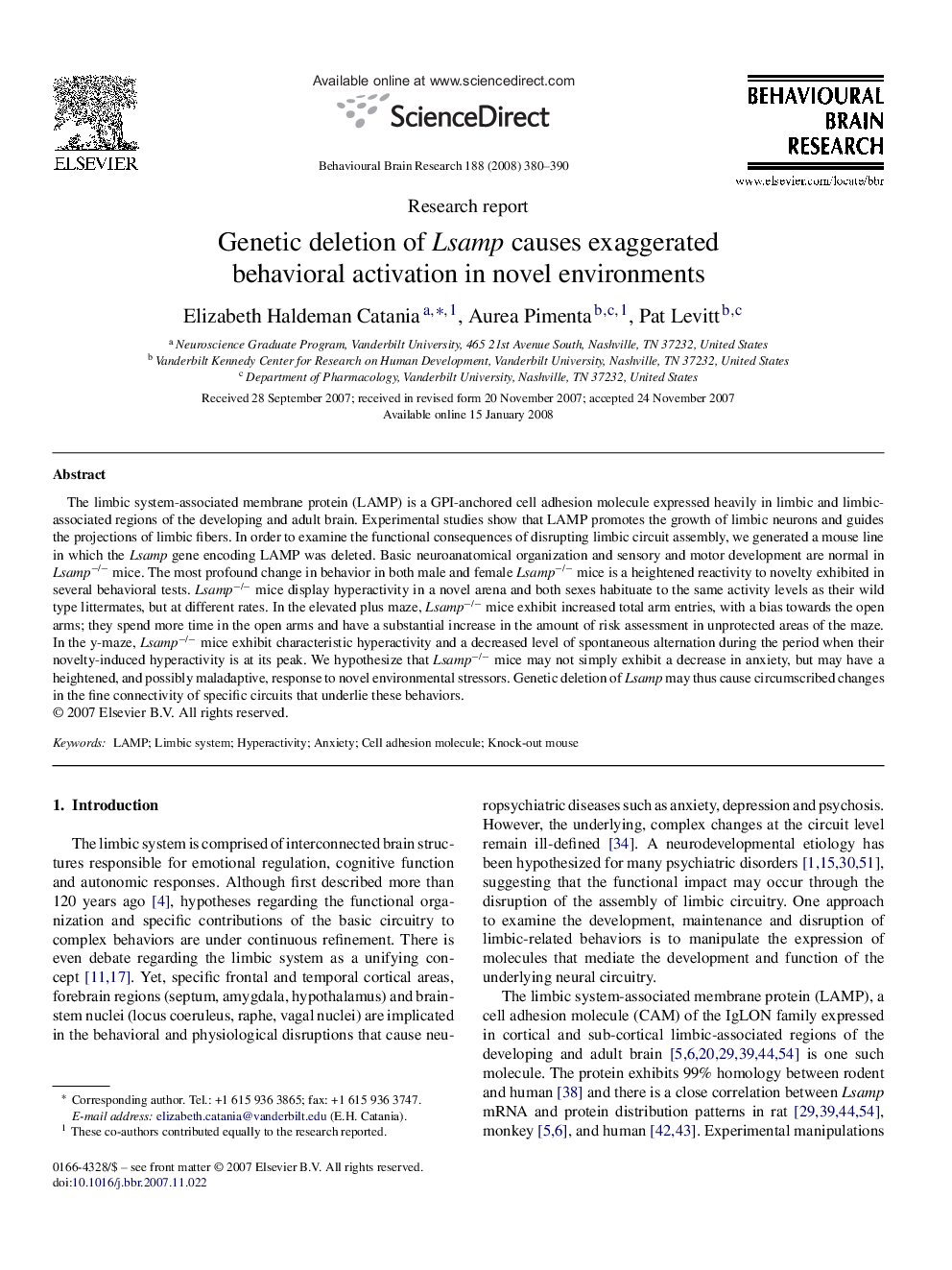| Article ID | Journal | Published Year | Pages | File Type |
|---|---|---|---|---|
| 4315407 | Behavioural Brain Research | 2008 | 11 Pages |
Abstract
The limbic system-associated membrane protein (LAMP) is a GPI-anchored cell adhesion molecule expressed heavily in limbic and limbic-associated regions of the developing and adult brain. Experimental studies show that LAMP promotes the growth of limbic neurons and guides the projections of limbic fibers. In order to examine the functional consequences of disrupting limbic circuit assembly, we generated a mouse line in which the Lsamp gene encoding LAMP was deleted. Basic neuroanatomical organization and sensory and motor development are normal in Lsampâ/â mice. The most profound change in behavior in both male and female Lsampâ/â mice is a heightened reactivity to novelty exhibited in several behavioral tests. Lsampâ/â mice display hyperactivity in a novel arena and both sexes habituate to the same activity levels as their wild type littermates, but at different rates. In the elevated plus maze, Lsampâ/â mice exhibit increased total arm entries, with a bias towards the open arms; they spend more time in the open arms and have a substantial increase in the amount of risk assessment in unprotected areas of the maze. In the y-maze, Lsampâ/â mice exhibit characteristic hyperactivity and a decreased level of spontaneous alternation during the period when their novelty-induced hyperactivity is at its peak. We hypothesize that Lsampâ/â mice may not simply exhibit a decrease in anxiety, but may have a heightened, and possibly maladaptive, response to novel environmental stressors. Genetic deletion of Lsamp may thus cause circumscribed changes in the fine connectivity of specific circuits that underlie these behaviors.
Related Topics
Life Sciences
Neuroscience
Behavioral Neuroscience
Authors
Elizabeth Haldeman Catania, Aurea Pimenta, Pat Levitt,
